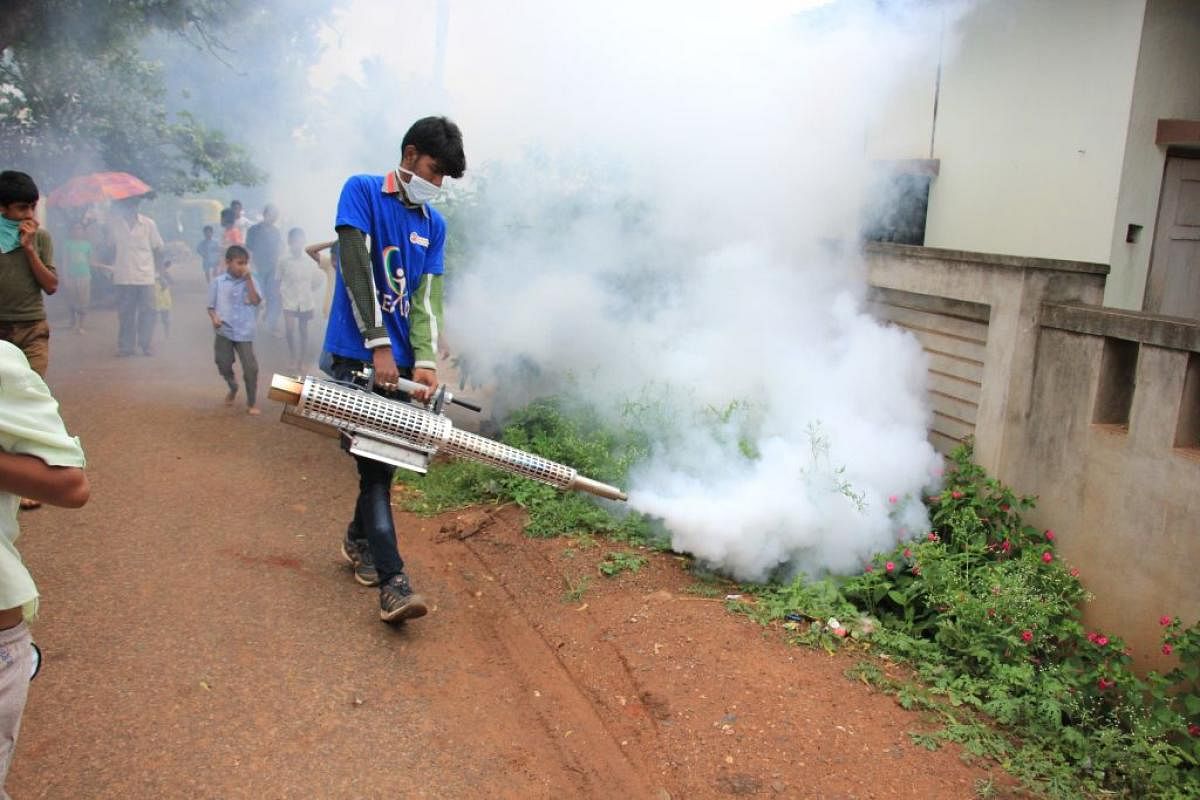We are all aware that the tiny mosquito has been a great tormentor of human beings. There is hardly anyone who has not been subject to the biting sting of this universal creature.
To suffer temporary itching from occasional bites is one thing but to become a victim of a virulent form of a debilitating disease is an experience of a different kind.
And this is what happened to me about four months ago when I suddenly took ill and was told by doctors that chikungunya had invaded my system. With unbearable pain and no specific cure, my curiosity to understand what this disease was all about was roused.
Ever since renowned British scientist Ronald Ross discovered way back in 1897 that the female mosquito was responsible for transmitting malaria between human beings, we have been waging a relentless battle to combat this disease.
Malaria, which had killed millions, is caused by a mosquito species called anopheles. At the time of independence in 1947, 22% of India’s population, or about 75 million were said to have been afflicted by this dreaded disease, with about 0.8 million people losing their lives every year.
It was brought under control thanks to the government-sponsored National Malaria Control Programme, launched in 1953. With declining mortality, malaria was thought to have been almost eliminated, but it saw a resurgence in 1976 with 6.4 million cases. Since then, the incidence of the disease has been fluctuating.
According to scientists, there are about 3,500 species of mosquitoes in the world, 400 of them in India which are carriers of diseases. In a new avatar, the species called Aedes aegypti, the mosquito is transmitting diseases like dengue, chikungunya, yellow fever and Zika.
It is estimated that these diseases take away about a million lives every year across the world apart from making many millions sick. The incidence of dengue has increased 30 times during the last 30 years.
Karnataka has been badly affected this year with over 10,000 cases being reported, the highest for any state in India. Bengaluru itself accounts for 61% of this number. Moreover, this time, the disease has attacked vital organs like kidney and liver, as reported by some doctors.
What is worrying and important to note is the prediction about the likely proliferation of the disease spreading mosquitoes, especially Aedes aegypti and another species called Aedes albopictus.
Scientists from some of the leading international academic and health institutions like the universities of Oxford, Washington and Belgium and the Boston Children’s Hospital gathered data on climate, migration, urbanisation and human travel and predicted that by 2050, 49% of the world’s population will live in places where these two species are established, if green gas emissions continue at the current rate.
The future of human health will depend a lot on how seriously we are going to tackle the risks posed by climate change. According to Professors Jay Lemery and Paul Amerbach, authors of the book Enviromedics: The Impact of Climate Change on Human Health, climate change will be the next great health threat. Birds and wild creatures are expected to flock to areas where the weather is congenial to them. Rapid urbanisation and the lack of proper waste disposal systems will act as aggravating factors.
How are we dealing with the situation in India? In 2002, the Government of India launched the National Vector Borne Diseases Control Programme to deal with all vector-borne diseases like dengue, chikungunya, kala-azar and Japanese encephalitis.
May 16 is observed as National Dengue Day to create awareness about the disease and take preventive measures before the onset of monsoon. Some of the common measures taken by the municipal and public health authorities are fogging and spraying chemicals which kill mosquitoes or keep them away. They also distribute dengue kits and bednets to the affected persons, particularly to the poor and vulnerable sections of society.
Let me refer to a pilot project carried out in Cucuta city located in the northeastern part of Colombia to combat mosquito-borne diseases. Zika virus which spreads through the same species of Aedes aegypti responsible for dengue and chikungunya is widely prevalent in South America.
A group of volunteers, led by one Glenis Barragan, using a phone app and a platform created by a US-based data and analytics company, visited the poor neighbourhoods in Cacuta educating and helping the residents to identify and destroy mosquito breeding grounds.
This experiment of involving citizens in solving the problem proved quite effective. When the team went back after a period of two months, they did not find any breeding grounds and people were applying chlorine to destroy the mosquitoes. As many as 70,000 breeding grounds had been destroyed.
Public participation
The lesson to be learnt from this small Colombian city is about the importance of public participation in matters relating to public health. As there are no specific antiviral medicines for diseases like dengue, the best we can do is to contain the sources of their proliferation, mainly stagnation of water.
Unfortunately, what we witness in our cities is people callously allowing water to stagnate in front of their houses after washing their front yard and cleaning their cars.
The municipal authorities must aggressively take up the task of improving sanitation on the one hand and creating awareness about the risks of contracting diseases like dengue. App technology can be used to involve people more directly in implementing preventive measures.
The WHO has called for a comprehensive approach to global vector control. The Government of India has developed a National Framework for Malaria Eradication (2016-30).
It should expand the framework to include all vector-borne diseases to improve the health and quality of life of the people in the country.
(The writer is former chief secretary, Karnataka government)
